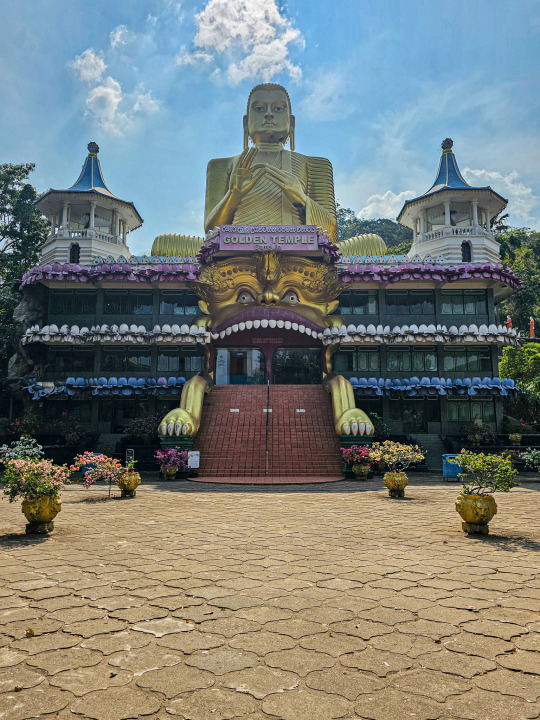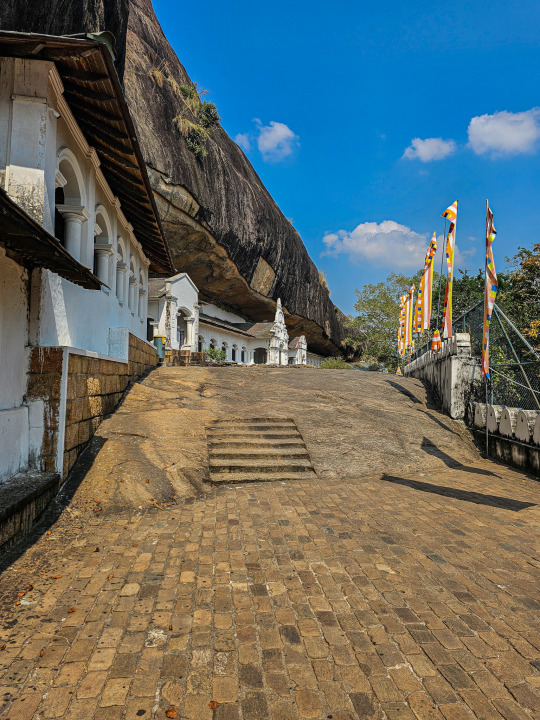#sri lanka culture
Explore tagged Tumblr posts
Text
Sri Lanka Traditional
Sri Lanka Traditional
Sri Lanka’s traditions are deeply rooted in its rich history, diverse cultures, and religious practices. The island’s traditional customs, arts, and festivals reflect a blend of influences from its main ethnic groups—Sinhalese, Tamil, Moor, and Burgher—each contributing to the vibrant cultural heritage of the country.

3 notes
·
View notes
Text
Sri Lanka Rundreisen | Fascination Sri Lanka
Sri Lanka's Cultural Treasures and Highlands!

Sri Lanka Rundreisen offer diverse adventures in a compact island. Explore ancient temples, pristine beaches, lush jungles, and vibrant culture on these enriching journeys.
Visit Srilanka-Reisen today and experience the beauty and culture of island tours!
#Sri Lanka Rundreisen#Sri Lanka Tour#Sri Lanka Culture#Experience Sri Lanka#Fascination Sri Lanka#Sri Lanka Classic
1 note
·
View note
Text

Vedda man, Sri Lanka, by Sergio Carbajo
#vedda#sri lanka#asia#south asia#folk clothing#traditional clothing#traditional fashion#cultural clothing
162 notes
·
View notes
Text

I have this exact book: Ghosts, Monsters, and Demons of India by: Rakesh Khanna & J. Furcifer Bhairav for those curious. And yes, sometimes some stories like these exist because of other cultures creating/attributing myths to other places.
Few famous examples: Griffins and the Indus Valley Worm
So Griffins and the Indus Valley Worm are creatures thought to have existed in India by Greek philosophers and scientists of the time. They made up the creatures but believed their origins to be "far exotic and from/to the east" a lot of storytelling has worked this way.
The Three Princes of Serendip (old name for Ceylon/Sri Lanka) is the first story of Serendipity (where we get the word btw) of just fun adventures (slice of life) about three Sri Lankan Princes. Only, it's not Sri Lankan in origin. It's Persian made up for entertainment ABOUT Sri Lanka.
Copy of the book for those interested:

It's a brilliant collection btw.
#Ghosts#Monsters#Ghosts Monsters and Demons of India by: Rakesh Khanna & J. Furcifer Bhairav#demons#Folklore#folktales#myths#myths and legends#indian fantasy#indian culture#indian#Griffins and the Indus Valley Worm#Greek philosophers#Three Princes of Serendip#Ceylon#Sri Lanka#serendipity#Sri Lankan Princes#Persian#global stories#south asian#southeast asian
28 notes
·
View notes
Text
Minnette de Silva is my Roman Empire and here is why.

It’s 1918, Sri Lanka is still known as Ceylon, a British Colony and the last place you’d expect to find feminist ground breaking artistic pioneers. Minnette de Silva is born and concurs.
One of the first modernist architects to come from Sri Lanka AND the first Asian woman to become an Associate of the Royal Institute of British Architects.
She was awarded the SLIA Gold Medal for her contribution to architecture “regional modernism for the tropics”
She did not complete her formal education due to family circumstances. Despite not finishing the modern equivalent of her A-Levels, she undertook an apprenticeship and attended lectures at the Ceylon Technical College (Desi kids rejoice at an intellectual icon who had an untraditional path through education). She then joined the Sir Jamsetjee Jeejebhoy School of Art which allowed her to study under many influential architects.

She was eclectic, intelligent and a force to be reckoned. She was expelled from the Government School of Architecture in India for attending a Free Gandhi March and refusing to write an apology letter to the Head of the School for it (we don’t stan Gandhi but we do stan standing up for your beliefs!)
Her father was extremely opposed to her career path but she went for it anyway. A bad bitch. An unstoppable force.
According to The Guardian “During her time at the Architectural Association (AA) in the UK she cut an elegant figure, draped in silk saris and followed by a train of young male students bearing her bags and instruments.”

This is how I imagine her walking down those halls!
Minnette de Silva returned to a newly independent Sri Lanka in 1949, and established her career in Kandy. She was influenced by Ananda Coomaraswamy, and advocated for the preservation of the traditional methods of craftsmanship, construction, and acquiring materials. She was inspired to create a style that incorporated the newly Western methods of development with the natural style, aesthetic, and landscapes of the tropical island.
The photos below are her designs and they are
e x q u i s i t e ✨


She never married. According to Architectual Record Minette explained to a friend “husbands are only good for carrying one’s bags”

My real life reaction to reading THAT quote🔥
However, Minette was always plagued by financial insecurity, she died penniless in a hospital in Kandy on the 24th of November 1998 at the age of 80. She had fallen from her bathtub at home, and was not found for days. Only a relative few of her building remain standing.
RIP Minette de Silva, you were a pioneer and an inspiration.
#sri lanka#dark academia#sri lankan culture#desi culture#light academia#museums#sri lankan history#history#architecture#inspirations#poc dark academia#sri lankan dark academia#poc academia#women history#i’m back bitches
29 notes
·
View notes
Text
Whenever Brits are like "tea is our national drink, our culture, our personality, our mental health" I think of our hill country blanketed in a patchwork quilt of human suffering and ongoing violent colonialism and want to smash all their tea cups. Your genocidal leaf juice is nothing to be proud of. The present day tea pluckers are the descendants of the Indians you enslaved and they still live in unthinkable poverty in the line houses you built to house them like cattle. The families whose farmlands you robbed have been starving for generations. Every sip of your leaf juice is soaked in blood and you drink it like vampires.
Tea will never belong to you. It's our legacy of grief, and your shame.

Drink your tea and shut the fuck up.
#sri lanka#'but my parents were immigrants!' 'and you're living in a genocidal country that's still sucking the marrow from the global south. so.'#'but my parents were indians!' 'ok? drink your chai and think about the stateless south indian tea pluckers? what is your point?'#if you live in britain you enjoy the fruits of its empire even if you're at the bottom of the food chain#that's why middle class Asians and Africans migrate to europe even if it means they have to earn a living on minimum wage#you can't share a race and country with sue braverman and tell me that your origins can make you any less complicit#british culture#tea#british empire#colonialism#british colonialism#colonization#extractive colonialism#tourism#capitalism#indigenous rights#indian ocean slavery#slavery#white supremacy#knee of huss#food culture#cash crops#monoagriculture#ecocide
70 notes
·
View notes
Text
Pt.2 of the collection of Sri Lankan stamps
(These stamps were issued during the colonial era of Sri Lanka. Correct me if I am wrong)










#Sri Lanka#Ceylon#colonialism#nationality#Britain#british royal family#Sinhalese#Tamil#tea#island#culture#postal stamps#stamps#stamp art#art#Sri lankan culture#unity#temples#Anuradhapura#tea plantation#Ceylon tea#colonial Sri Lanka#colonial Ceylon#old Ceylon#queen#queen elizabeth ii#king george iii#king george v#England#English
16 notes
·
View notes
Text










2 notes
·
View notes
Text
i wish i was dumb enough to believe in god
#atheism#we were all born atheists and then programmed to believe in whatever the culture around you believes#like if you were born in India you wouldn’t be a Jesus freak#if you were born in sri lanka you’d be a Buddhist#it’s too subjective to be real
3 notes
·
View notes
Text
History of Chekavar lineages

In the Arithapatti Stone Inscription of the 3rd century BC is the oldest record using the Ezhava noun.
In a paper presented at the first All India Oriental Conference held in Poona in 1919, H. This fact was brought to light by Krishnasastri.
The Sithannavasal cave inscription, which is believed to be dated to the end of the 2nd century BC, mentions a “Cherupoil Ezhavan” who installed a “Kavuti Ittan”.
If anyone has any doubts, let me give you more evidence that how ancient the Ezhavas are in Kerala.
Historians all agree that the Ezhavas are the descendants of the Villavars who founded the ancient Dravidian Chera dynasty and ruled South India.
The Villavarei of Travancore were called Illavars or Ezhavas.
Bowing is an ancient art form among the Ezhavas.
Villavar means an archer or a skilled archer.
The relationship between the Billas and the Ayut Ezhavas of Karnataka is this way.
The Ezhava community has left its indelible mark in many Meghalayas as a major economic force in Kerala in building the cultural identity of Kerala.
Farmers, industrialists, foreign traders, domestic traders, weavers, warriors, teachers, Sanskrit scholars, great physicians, astrologers, poets, artists, rope makers, toddy makers, wheel spinners, odu makers and ship rope makers have always flourished in Kerala.
No other community had as many Ayurvedic physicians as the Ezhava community.
The Ezhava physicians practiced medicine as a service without talent.
The Ezhavas got this medical tradition from their connection with Buddhism.
Although Brahminical supremacy and Chaturvarnya suppressed the Ezhavas from society by making them untouchables, Sanskrit scholars, medical experts and accomplished researchers emerged from among the Ezhavas from their Buddhist tradition.
If you doubt any of this, do some research on Cherthala Kollat Itti Achyutan Vaidya, author of Hortus Malabaricus.
The Chavarkote, Vallabhassery and Valliparambil Cholayil Medimix families are well-established traditional Ezhava Vaidya families.
Ashtanga Hridiya was translated from Sanskrit into Malayalam by Ezhava Vaidyacharya Kyaikkara Govindan Vaidya.
Chekavar is our clan name which was only used by Ezhavark and Thiyar in Kerala. No other caste has this.
The tradition of Aromal Chekavar and Unni Archa and so many families used the name Chekavar. In the writings of our ancestors, there was Chon Chekon Chevakan Chekavar along with their name. But now it is not like that we have to boldly add Chekavar name along with our name not to beat anyone not to compete with anyone to maintain our legacy.
In the introduction of Hortus Malabaricus, Kollat Itti Achyutan Vaidyare is introduced as Chekor.
Kanterwischer stated that during the mid-eighteenth century, the Purakkat king, who ruled from Ambalapuzha as his capital, had very few Nayans in his army and the army and its leadership were entirely filled with Chegos.
(All this indicates that our traditional clan name is Chekavar. Now movie makers are adding Chekavar name to everyone seen. If you hesitate, some others will make our real history their own. You add Chekavar clan name to your future generation.)
Cheerapanchira Mukal Vattam Temple is the family temple of the ancient Ezhava lineage Cheerapanchira.
The family home where Swami Ayyappan studied at Kalaripayattu.
Up here, someone was walking around saying that there is no temple and no altar for Ezha people.
It is good for those who are like that to know a little bit of world information from time to time.
Chekavar clan had many ancient temples. From here to here in Kerala. Apart from that, the family has temples, kavas, tharas, nagatharas and many other forms of worship. Also there were many temples run by the Nair caste and the Ezhava community together. When they were in good harmony, later the Brahmin ideas kept dividing the two communities for their own benefit.
Let’s be proud we are “Chekavar” blood ⚔️ Add clan name Chekavar with name 🙏
Credit :-
2 notes
·
View notes
Text

Sri Lanka Vacation Holiday Tour Visit & Explore South Asia Culture, Heritage and Art ! Login: https://www.southasiavoyage.com
#sri lanka#tourism#travel#travel destinations#Srilanka girl#heritage#art culture#vacation#holiday#tourist#tour package#sightseeing#explore#beaches#South Asia
3 notes
·
View notes
Text
Culture of Sri Lanka
Culture of Sri Lanka
Culture of Sri Lanka is a rich tapestry woven from its ancient history, diverse ethnic groups, religious traditions, and vibrant arts. The island’s strategic location in the Indian Ocean has also contributed to its cultural diversity, with influences from India, Southeast Asia, Europe, and the Middle East.

2 notes
·
View notes
Text
Rangiri Dambulla Cave Temple

Nestled amidst the rolling hills of Sri Lanka's central plains lies a treasure trove of ancient spirituality and artistic marvels - the Rangiri Dambulla Cave Temple. Recognized as a UNESCO World Heritage Site, this sacred sanctuary beckons travelers from far and wide to immerse themselves in its rich history and serene beauty.
Steeped in legend and lore, the Rangiri Dambulla Cave Temple has been a place of worship and pilgrimage for over two millennia. Carved into the rocky outcrops towering over the surrounding landscape, the temple complex comprises a series of five caverns adorned with intricate murals and majestic statues of the Buddha, offering visitors a glimpse into the spiritual heart of Sri Lanka.
As you step into the cool, dimly lit chambers of the cave temple, you'll be greeted by a breathtaking display of ancient artistry. Vibrant frescoes depicting scenes from the life of the Buddha adorn the walls, their colors still vibrant after centuries. Towering statues of the Buddha in various poses, carved from solid rock, exude an aura of peace and tranquility, inviting contemplation and reflection.

Wander through the labyrinthine corridors of the cave temple, each chamber revealing new wonders to behold. Marvel at the intricately carved pillars and ceilings, adorned with geometric patterns and mythical creatures. Ascend to the highest cavern, known as the Maharaja Viharaya, where you'll find the largest and most impressive statues of the Buddha, including a towering 14-meter reclining Buddha that is sure to leave you in awe.
Beyond its artistic and architectural splendor, the Rangiri Dambulla Cave Temple holds profound cultural significance for the people of Sri Lanka. It has served as a place of refuge during times of conflict and a beacon of hope and inspiration for countless generations. Today, it continues to be a place of worship and pilgrimage, drawing devotees and travelers alike to its hallowed halls.
As custodians of this cultural treasure, the people of Sri Lanka are committed to preserving the Rangiri Dambulla Cave Temple for future generations. Conservation efforts are underway to safeguard the site's ancient art and architecture, ensuring that its spiritual and historical legacy endures for centuries to come.
Step into the timeless realm of the Rangiri Dambulla Cave Temple and experience the serenity and splendor of this UNESCO World Heritage Site for yourself. Whether you seek spiritual enlightenment, artistic inspiration, or simply a moment of quiet contemplation, you'll find it amidst the ancient caverns and sacred halls of this remarkable place.🇱🇰🏛️🕉️
1 note
·
View note
Text

Yaktovil dancer, Sri Lanka, by Chris Roe
#sinhalese#sri lanka#asia#south asia#folk clothing#traditional clothing#cultural clothing#traditional fashion
273 notes
·
View notes
Text
Cancerates
When you eradicate cancer, you have to take out healthy cells too. Chemotherapy consists of murdering cells in your body, taking advantage of the fact that cancer cells are more vulnerable while not actually stopping normal cells from being vulnerable. If you think about it, even the actual cancer cells are a part of you. They are your cells mutated, not some invading outside force. Smoking, radiation, and air pollution can all encourage mutations, but it’s your DNA that ultimately poses the problem.
The swastika started out a Hindu symbol. It’s still exceptionally common in India, where it was used religiously for centuries before the Nazis took it. Between that and Indian political parties using the hammer and sickle, I have practice scrutinizing the background of family photos to make sure nothing questionable has slipped in.
I’m the kind of person who stopped using the okay symbol when it became an alt-right dog whistle; I’m not saying anyone has a right to reclaim the swastika. I just think a lot about the fact that it was ours, first.
#To cancerate is to grow into a cancer#tw: nazis#me: hm. cancer is a bit of a heavy subject. Do you know what would make that easier. Genocide#seriously i think about the hindu swastika all the time#not with yearning- it's not a symbol I grew up with or anything for obvious reasons#just a mild sense of disquiet#cultural appropriation#fascism#nazis#hinduism#hindu symbolism#by the way if you're one of those new-age spiritualists who considers yourself a hindu#but didn't bother to learn about india (or china or bangladesh or pakistan or sri lanka or-)#this post is not for you#religion is culture#my writing#creative writing#library of babel#unedited
2 notes
·
View notes
Text
FYI if you're watching MasterChef Australia, the Sri Lankan Australian contestant Savi is a friend of mine and kind of a stealth idol because everything I seem to be online (a ball-busting, bombastic, proudly brown, unapologetically fat, sexy decolonizer lady) she actually is irl. It's funny because she was a few grades below me and found me intimidating when we were in school and now I'm the one perpetually in awe of her. Do watch if you can and root for her! She's a delight!

#it looks like she's really not taking down the heat level to cater to the white judges taste buds#which kinda thrills me because you should be able to handle heat if you're a judge on a chef contest#but i don't think even i would have had the stones to risk it for a televised competition#which tells you all you need to know about her lmao. and I get it bc Savi's food is an expression of herself the way my writing is of mine#'just because you can't handle it doesnt mean there's anything wrong with me' is fucking praxis#jealous bootlickers on lankan twitter are trying to start shit#being like 'yo didn't this woman say that Michelin stars are just white people opinions and don't mean anything?'#And? she's right??😂😂😂😂#woman SAID what she SAID#masterchef australia#sri lanka#sri lankan cuisine#food culture#knee of huss
66 notes
·
View notes